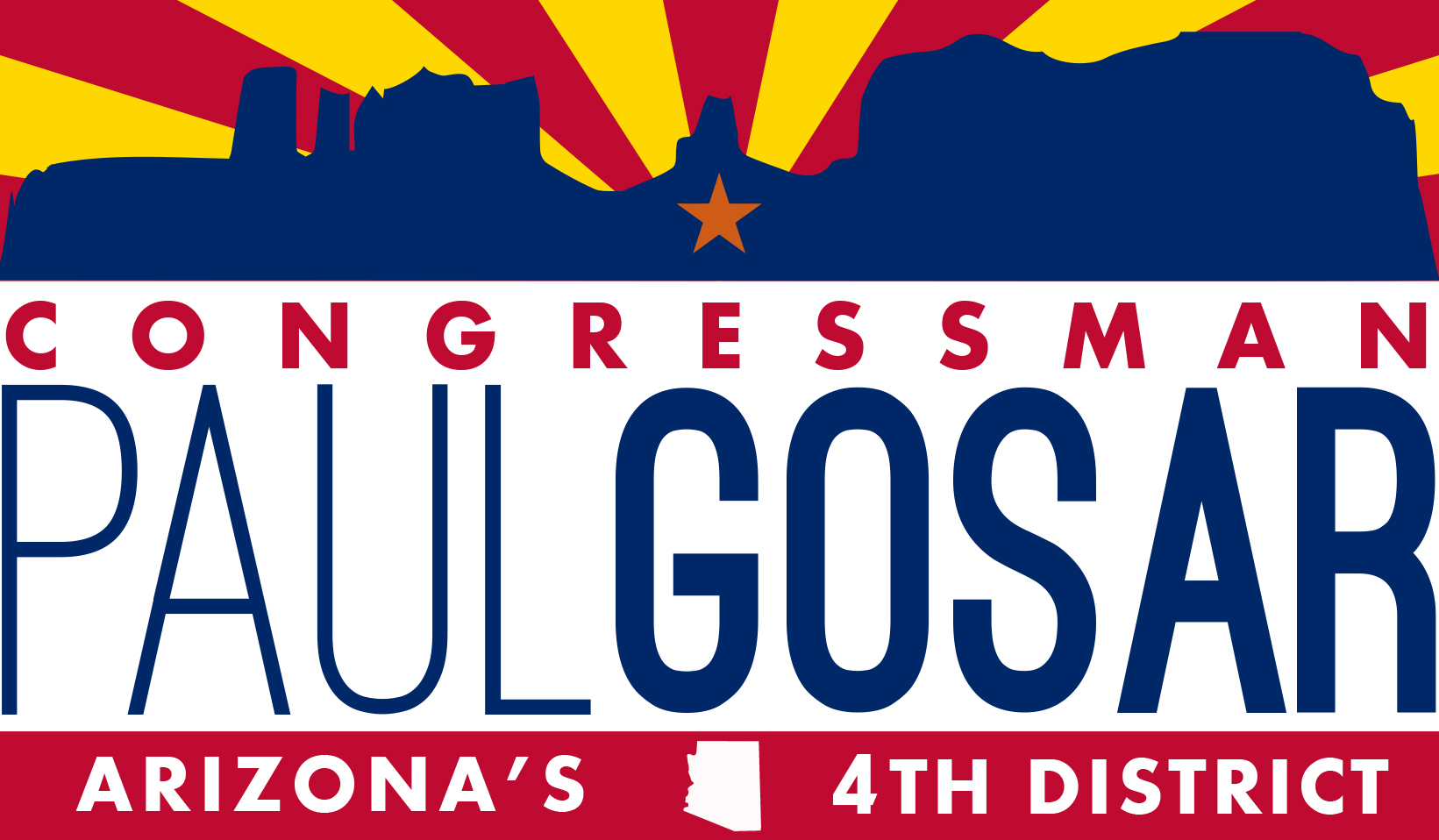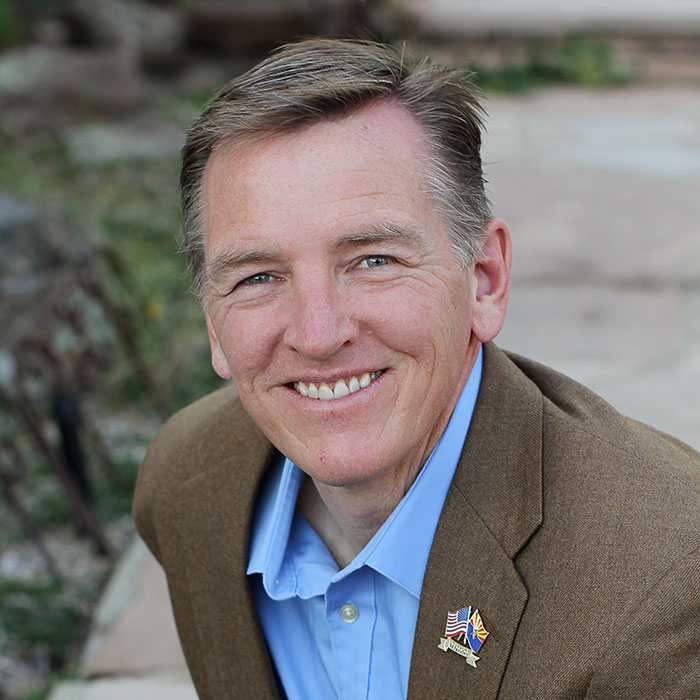|
(Courtesy of the Congressional Western Caucus)
Today, Congressional Western Caucus Chairman Paul A. Gosar D.D.S. (AZ-04) and Executive Vice-Chairman Scott Tipton (CO-03) and Western Caucus members Rep. Mike Johnson (LA-04), Rep. Andy Biggs (AZ-05) and Rep. Jason Smith (MO-08) issued the following statement in response to the delay of the October 2015 Ozone Rule promulgated by the Obama Administration’s Environmental Protection Agency (EPA):
“When pristine national parks like the Grand Canyon, Yosemite and Rocky Mountain are in danger of being in nonattainment under the proposed Obama standard, there is a serious problem with the numbers,” said Chairman Gosar. “I am glad to see common sense finally prevail at the EPA with the announcement that the agency is postponing and reevaluating the job-killing Ozone Rule promulgated by President Obama and former Administrator Gina McCarthy. By delaying this out-of-touch standard, the EPA can fully consider what levels of ozone occur organically, the amount of background ozone from international sources and the impacts of exceptional events. The currently proposed 70 parts per billion standard is unattainable for numerous counties throughout the country. Furthermore, it is not based on sound science and would absolutely decimate states, killing tens of thousands of jobs and costing our economy tens of billions of dollars annually.”
Congressman Tipton said, “Instead of performing the scientific due diligence to tailor ozone standards to fit the naturally occurring conditions of each state, President Obama’s EPA rushed through an unworkable standard that would have a severe impact on the U.S. economy. I am pleased that Administrator Pruitt took action to provide states with more time to meet the proposed standards. It is critical that the EPA take into account naturally occurring atmospheric ozone formation in mountainous states like Colorado and give the West the opportunity to continue to improve air quality and support jobs and the economy.”
"The mishandling of the EPA's proposed Ozone Rule is a prime example of out-of-touch, Washington bureaucrats making costly decisions with no regard for how they may adversely affect hard-working Americans. I applaud the new EPA Administrator's decision to delay the implementation of the Ozone Rule and look forward to further reducing government red tape," said Congressman Johnson.
“I am pleased the EPA will delay the Obama Administration’s implementation of the October 2015 Ozone Rule,” said Congressman Biggs. “For eight years, Arizona and many other states suffered under the nefarious, regulatory eye of the Obama Administration – most significantly under the EPA. President Trump has wisely surrounded himself with leaders, like Scott Pruitt, who place a premium on listening to states and respecting their 10th Amendment rights. Under Secretary Pruitt’s direction, the era of politically-motivated and job-killing environmental policies is finally over.”
“While I would take the air in Missouri over that of the coastal cities any day, the standards of this Obama era rule were so strict, that even the fresh air in a place like Mark Twain National Forest would not be compliant,” said Congressman Smith. “Stopping this rule and keeping jobs and revenue in rural areas is one of the things Administrator Pruitt and I talked about in our meeting last week. I am glad to see President Trump’s EPA taking action to make sure rural areas are no longer going to be held to unattainable standards or suffer the economic costs of trying to meet those unattainable standards.”
Background:
Courtesy of the Environmental Protection Agency (EPA)
The EPA announced this week through letters to each Governor that the agency is extending by one year the deadline for promulgating initial area designations for the 2015 ozone National Ambient Air Quality Standards (NAAQS), from October 1, 2017 to October 1, 2018.
The National Ambient Air Quality Standard (NAAQS) for ground-level ozone is an outdoor air regulation under the Clean Air Act. As part of the process to determine what areas of the country are able to meet the current air quality standards, states are currently submitting their proposals for area designations under the 70 parts per billion (ppb) standard, which was lowered from 75 ppb in October of 2015. This additional time will also provide the Agency time to complete its review of the 2015 ozone NAAQS, prior to taking the initial implementation step of designation.
Areas designated as being in “nonattainment” of the standard face consequences, including: increased regulatory burdens, restrictions on infrastructure investment, and increased costs to businesses.
Since 1980, total emissions of the six principal air pollutants have dropped by 63 percent and ozone levels have declined by 33 percent.
The full EPA press release and full statements from EPA Administrator Pruitt can be found HERE.
Courtesy of the Congressional Western Caucus
Most states are just beginning to adopt the 75 parts per billion ozone standard proposed in 2008 as the EPA didn’t announce implementation guidance and a final rule until March 6, 2015.
Rather than allowing time for that standard to be implemented, the Obama Administration moved the goal posts and unilaterally sought to dramatically lower the ozone standard once again to 70 parts per billion in October of 2015.
More than 260 organizations representing businesses of all sizes oppose reducing the ozone standard to 70 parts per billion.
Courtesy of the U.S. Chamber of Commerce
The revised 70 ppb standard will cause significant portions of the country to fall into nonattainment. Compared to the previous 75 ppb standard, which had 28 areas classified as nonattainment, according to EPA data 241 counties violate the 70 ppb standard. Industry analysis projects a significantly higher number, with an estimated 958 counties falling into nonattainment under the 70 ppb standard. Counties and areas classified as nonattainment can suffer stringent penalties; including: (1) EPA overriding states on permitting decisions; (2) new facilities and major modifications having to install the most effective emission reduction technologies without consideration of cost; and (3) federally supported highway and transportation projects being suspended.
In the Regulatory Impact Analysis released with the final rule, EPA estimated a cost of $1.4 billion for the revised 70 ppb standard. However, a year prior in 2014, EPA estimated that a 70 ppb standard would cost $3.9 billion. Going back to 2010, EPA projected that a 70 ppb standard would cost $19 to 25 billion annually. Industry cost estimates have also differed drastically from Agency projections, EPA's cost estimates for a 60 ppb standard was as high as $90 billion but industry projections placed the real cost at closer to $1 trillion.
Courtesy of American Action Forum
The 2008 Ozone standards resulted in a loss of $56.5 billion in earnings for workers in nonattainment counties ($690 per worker). In addition, nonattainment counties lost 242,000 jobs between 2008 and 2013. This has implications for the recently-promulgated 2015 standards.
Courtesy of the Arizona Chamber Foundation and Prosper Foundation Policy Brief
The EPA’s new ozone standard of 70 ppb will be virtually impossible for Arizona to meet due to Arizona’s high levels of background, limited local sources, and unique geography….Implementation of the current rule in Arizona is not reasonable, based in sound science or achievable.
The cost and feasibility of compliance will simply prove too great for many businesses, forcing them to shut down, relocate operations, or forgo growth and expansion. This says nothing of the businesses that will simply choose not to come to Arizona due to the uncertainty of obtaining necessary permits to operate, an unfortunate consequence that has already come to fruition. The full text of the Arizona Chamber Foundation and Prosper Foundation Policy Brief can be found HERE.
###

|


